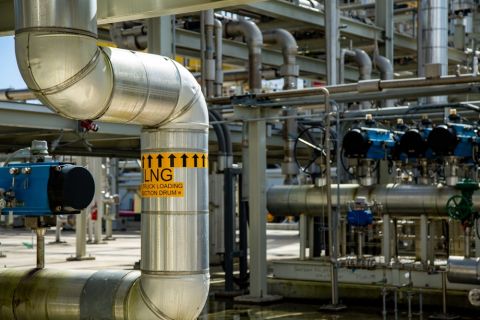Recently, oil prices have reached the highest level seen this year, with supply cuts from OPEC+ providing the impetus.
During the first week of September, Saudi Arabia and Russia agreed to maintain their supply cuts through the end of the year, which combined are around 1.3 MMbbl/d. After Saudi Arabia announced its voluntary production cut of 1 MMbbl/d on July 3, the price of Brent crude increased from $74.65/bbl to $89.92/bbl (as of Sept. 7).
The recent developments in the oil market have aligned with our expectation. We noted in our June article that OPEC+ would be proactive in adjusting supply to counteract disappointing economic news and negative trader sentiment. Additionally, we forecasted that oil demand would be sufficient, along with the supply cuts, to push the oil market into a deficit and, consequently, the oil price would move forward on an upward trend, albeit not on a straight line.
Furthermore, we put forth the view that oil prices would not break through $100/bbl this year, which we still hold as our base case.
Based on our projected demand and supply for the fourth quarter, we are forecasting that the fourth-quarter deficit will be 1.95 MMbbl/d with the current supply trends (including Saudi Arabia and Russia extending their production cuts through the end of the year). Even if this deficit in the fourth quarter comes to be, global commercial crude inventories (OECD and non-OECD) would be essentially the same as the pre-COVID levels. Additionally, we think it is unlikely that a deficit of this level will be sustainable, given that the effective spare capacity of OPEC+ with the additional production cuts in July is approaching 6 MMbbl/d.
While there have been production cuts, others are increasing their production. Previously, we highlighted increasing production from African producers (including Nigeria and Libya) and sanctioned producers (namely Venezuela and Iran). Additionally, U.S. production continues to increase this year even though the rig count has been decreasing. There are several factors that are resulting in this apparent contradiction.
Production from the Permian Basin has been increasing significantly and contributing a greater share of overall U.S. production in comparison with the pre-COVID period.
- In the Permian, the monthly completion count has reached pre-COVID levels despite the low rig count because the inventory of DUC wells has declined from 3,514 wells in July 2020 to 856 wells in July 2023;
- Drilling activity in the Permian Basin is becoming more efficient, with wells per rig increasing by 19%;
- The average lateral length of a horizontal Permian well has increased by around 15% in comparison to 2019, while the average proppant loading has increased by approximately 7%; and
- The longer lateral lengths and the increased proppant loading has resulted in the performance of Permian wells increasing by around 15% compared to their performance in 2019.
The global economy is still shaky. While the U.S. economy continues to grow, the leading indicators are mixed, with the outlook for the service sector showing some improvement, the manufacturing sector contracting and the position of consumers deteriorating.
The U.S. economy, however, remains in better shape than the economies of the EU and China. Germany’s industrial production decreased by 0.8% in August and, for the year, has decreased by 2.1% and is lagging pre-COVID by 7%. China is dealing with weak export markets and weak domestic demand coupled with a debt-laden real estate sector.
The weakness in the other economies is helping to push the U.S. dollar higher, as indicated by the U.S. Dollar Index reaching the highest level this year during the first week of September. All other things being equal, a strong U.S. dollar puts downward pressure on oil prices because it translates into higher oil prices for other consuming countries.
For the remainder of the year, we are not expecting any additional supply cuts from OPEC+. As we previously indicated, the biggest risk to supply stems from geopolitics (and internal conflict) that would result in disruption to oil production and oil movement.
At this point, we think it is unlikely that demand will surprise to the upside—certainly not in the U.S., nor in Europe. Some point to China as source of increased demand; however, our reference forecast already includes demand growth of nearly 6% for China during the fourth quarter (in comparison to fourth-quarter 2022). We do not see the situation improving materially for China during the next few months—the exports markets are expected to remain weak, and the structural issues being faced by China will not be resolved by short-term measures intended to boost domestic demand.
Recommended Reading
From Restructuring to Reinvention, Weatherford Upbeat on Upcycle
2024-02-11 - Weatherford CEO Girish Saligram charts course for growth as the company looks to enter the third year of what appears to be a long upcycle.
JMR Services, A-Plus P&A to Merge Companies
2024-03-05 - The combined organization will operate under JMR Services and aims to become the largest pure-play plug and abandonment company in the nation.
New Fortress Energy Sells Two Power Plants to Puerto Rico
2024-03-18 - New Fortress Energy sold two power plants to the Puerto Rico Electric Power Authority to provide cleaner and lower cost energy to the island.
Kimmeridge Fast Forwards on SilverBow with Takeover Bid
2024-03-13 - Investment firm Kimmeridge Energy Management, which first asked for additional SilverBow Resources board seats, has followed up with a buyout offer. A deal would make a nearly 1 Bcfe/d Eagle Ford pureplay.
SilverBow Rejects Kimmeridge’s Latest Offer, ‘Sets the Record Straight’
2024-03-28 - In a letter to SilverBow shareholders, the E&P said Kimmeridge’s offer “substantially undervalues SilverBow” and that Kimmeridge’s own South Texas gas asset values are “overstated.”





